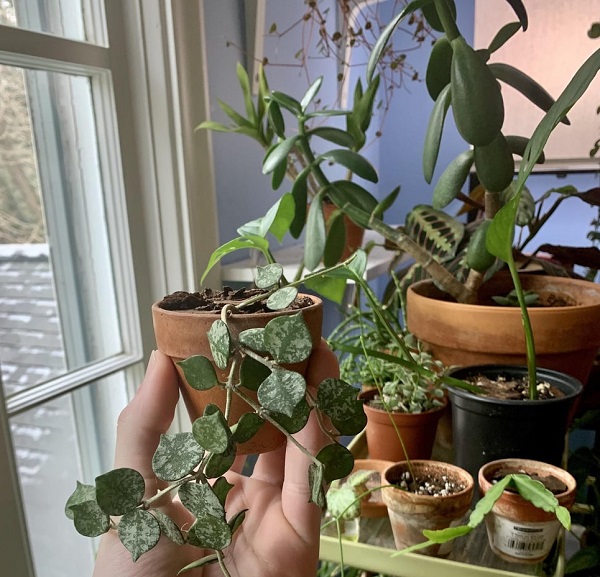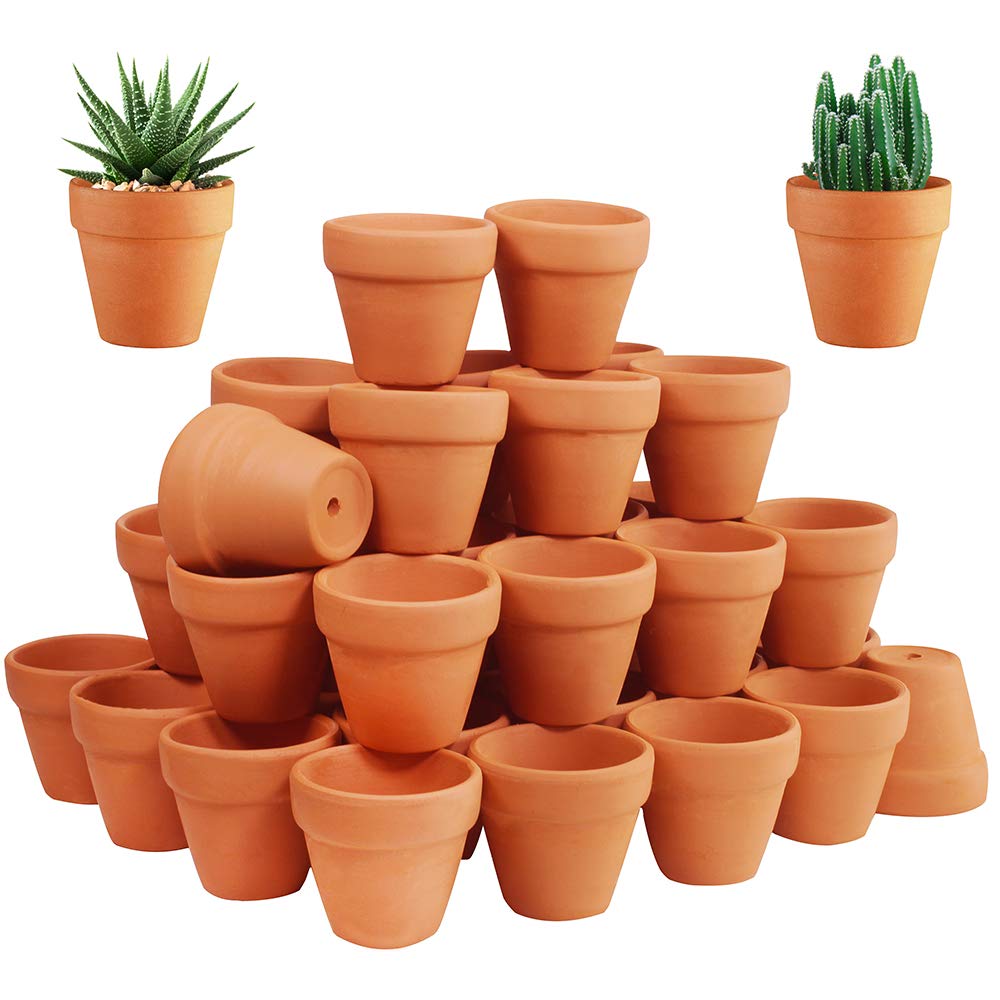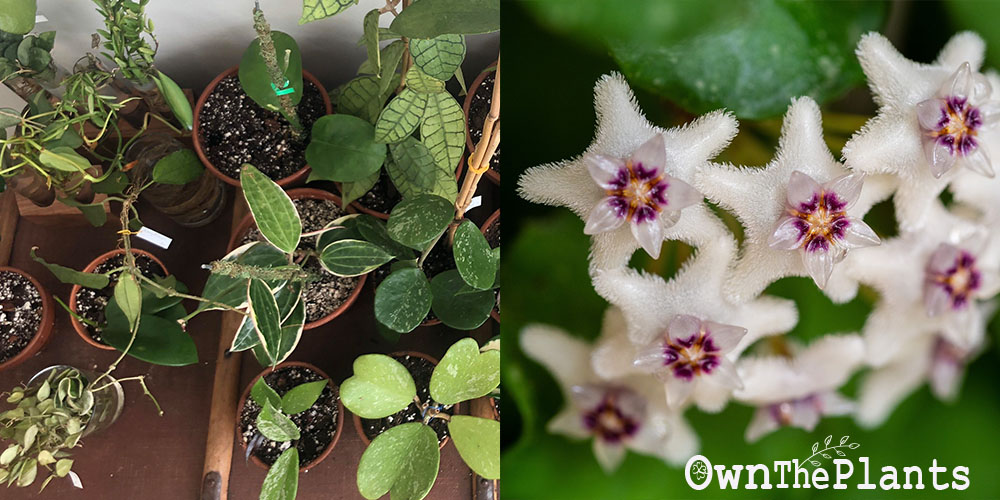Aside from the beauty that they hold, Hoyas are also a favorite among plant collectors due to their easy and pretty straightforward care and maintenance.
These flowering succulent vines are native to Asia and are available in a wide variety of shapes and colors, not to mention the alluring scents of some species.
However, these tropical plants will only show you their sought-after magnificent blooms when their requirements are duly met.
Hence, if you have a hoya that you badly want to flower, it is important that you understand them and know their basic needs.
One specific requirement for Hoyas that you might not know is that they really do not like extra spaces. They like to keep it tight, and they best thrive in shallow, small planters.
If this is a shocking revelation for you, then you’ve come to the right place! In this article, you will learn about the optimum space requirements for your Hoyas.
We will help you understand your Hoya more so that you can give it the best care it deserves.
Getting to Know Hoyas
Hoya plants, also commonly called Wax Flowers or Wax Plants, belong to the dogbane family, Apocynaceae.
They are close relatives of Frangipanis and Nerium flowers. As of the present, there are approximately 500 accepted species of Hoya.
These beautiful vines are tropical. They are mostly native to Asian countries such as Philippines, Thailand, India, Malaysia, Polynesia, and Indonesia, among others. Hence, they best thrive in tropical-like environments.
It is important that you know where your plants originate and what their natural habitat is so that you’ll know what kind of environment they best thrive in.
For your Hoya plants, since they come from the lush rainforests of Southeast Asia, always strive to emulate humid, moist, and consistently warm conditions.
Do Hoyas Like Small Pots?

Your Hoya plants are relatively slow growers compared to other vining plants.
This is because they are succulent, which requires the plant more energy in order to produce. Hence they take time to overgrow their pots. They can thrive in the same container for many years.
Because they are slow-growing plants, your Hoya plants do not almost ever require a planter that is bigger than 6 inches in diameter.
As a matter of fact, they healthily grow and produce more blooms if they are constricted in small pots and have roots that are slightly compacted.
Why Do Hoyas Not Prefer Large Pots?
We know that Hoyas do best in small, constricted containers. However, it does not really mean that you cannot plant them in larger pots.
In fact, you can, but of course, with underlying risks. Hoyas do not prefer large pots mainly due to two reasons: space and water requirements.
Hoya Space Requirement
Hoyas prefer smaller pots than the larger ones because of the conditions they have in their natural habitats.
The natural conditions where they grew and evolved over hundreds of years are always the best conditions for them.
In the wild, your epiphytic Hoya plants have an extremely compact root system that acts, not just for mineral and nutrient absorption, but also for anchorage to trees and rock crevices that they climb unto.
These spaces are limited and generally small; hence they really do not need more space to have free-spreading roots.
Mimicking these environmental conditions for your Hoya plants is the perfect way for them to thrive and grow to the fullest of their potential.
Hoya Moisture Requirement
As said before, Hoyas are epiphytic vines that are commonly found in the wild climbing on trees and sprouting over rock crevices, and not on the soil where most plants are.
This growing habit tells a lot about the moisture requirement of Hoyas. They do not want to be surrounded with a lot of water.
Tree trunks and rock crevices do not retain as much moisture as the soil can. Water is freely draining in these habitats, hence, Hoyas are not adapted to being soaked in a lot of moisture.
With this moisture requirement of Hoya, it is recommended to use small, shallow containers or plants, instead of larger ones.
Large pots hold more quantity of soil than the small ones. More soil means more moisture retention. More moisture retention means your Hoya will soak in excess water than they are adapted to.
In smaller pots, moisture is just available in the soil for the right amount. Excess water drains and evaporates quickly, hence, Hoyas are only absorbing the moisture they need and avoid being overwatered. This is why they do best in smaller pots.
Best Types of Pots For Hoyas
Aside from pot size and depth, another factor you should consider when you plant your Hoya vines is the types of pot to be used.
The pot material to be used for potting Hoyas are often the most neglected factor in Hoya gardening, especially for beginners.
The general aspects that you should be looking when you choose a pot for your Hoyas are the following characteristics:
- Number of drainage holes
- Pot size
- Pot material
There are many types of pots that you can use for your Hoya plants. Depending on the materials, there is clay, glazed ceramic, fiber glass, and metal, among others.
However, the best type of pot to be used for your lovely Hoyas are terra cotta and plastic plants.
Below, we will show the pros and cons of these most efficient pot types for your Hoyas.
Terra Cotta Pots

Terra Cotta pots have characteristics that work best for Hoyas. Since they are generally porous, water will dry out much quickly in terra cotta pots than other pot types.
There is less risk of overwatering, hence, your Hoya will not be standing in excess water. The porous quality also allows proper root aeration.
However, the porous quality of terra cotta pots can also be a con. Since soil dries quickly in this type of pots, you need to water your plant more frequently.
If you’re the type of plant owner who does not water your plant frequently, this might cause a problem for you.
Additionally, Hoya roots stick to terra cotta pots firmly. This does not really become a problem until you take out your plant for repotting.
Firmly attached roots often lead to them being damaged and ripped off when pulled out of their containers.
Plastic Pots
Plastic pots also work well for Hoyas. Unlike in terra cotta pots, roots do not really stick to the surface of the plastic pots, making it easier for repotting.
However, plastic pots retain more water and moisture in the soil. If your potting mix does not drain well and dries out for a longer period, this will cause a problem for you.
There is a high risk of overwatering, and your Hoya will definitely be unhappy.
Right Potting Mix For Hoyas
Hoyas love airy, light, and well-draining potting medium. A potting soil with efficient air circulation and proper drainage is essential for these succulent vines. To achieve this, you have to mix your garden soil with other organic materials.
The perfect potting mix for Hoyas is a mixture of equal parts of perlite, orchid mix, and cactus or succulent mix.
The succulent mix contains a significant amount of sand, which will surely provide a well-aerated and draining environment to the roots of your Hoyas.
When to Repot Hoya Plants
As we already know, Hoyas are slow growers and can stay in their own pots for a very long time. In fact, a root-bound Hoya blooms more aggressively.
However, there will always come a time when repotting will be necessary. So how do you know it? We’ll find out below.
There are telltale signs that you must lookout for in order to know the perfect timing of Hoya repotting.
If you start to observe at least one of the signs, consider repotting your Hoya to a bigger planter.
The signs are as follows:
- You start to see hard mat of root systems on the pot surface. This is a sign that your Hoya is excessively root-bound.
- The soil or growing medium dries out faster than usual, so you tend to find yourself watering your plant more frequently.
- There are a lot of roots peeking out of the drainage holes.
- Plant is seemingly large for its container and growth has dramatically slowed down or has come to a stop.
The signs above are strong indications that your Hoya plant needs to be repotted. If you want to be so certain, take your Hoya plant out and look for root balls.
Of course, do this with extreme caution so as not to inflict damage to the roots.
How to Repot Hoyas

Hoyas are easily repotted, and you can actually do it in just 3 simple steps. However, there are certain tips that you must know so that you can repot your plant successfully.
1. Take your plant out and loosen the compacted roots.
This is actually a simple step, unless you see severely compacted root balls that need more effort to loosen out.
To loosen the root balls easily, you can water your plant before your scheduled repotting.
2. Always choose the appropriate pot size.
Your Hoyas thrive best in smaller pots, hence you should not use a pot that is extremely larger than their previous pot.
The appropriate pot size for repotting is 1 to 2 inches in diameter larger than the previous pot.
3. Use a well-draining potting mix.
Again, Hoyas love an airy, light, and well-draining mix. As mentioned before, consider mixing your garden soil with organic materials such as perlite, pumice, sand, and other potting mixes like succulent or cactus mix.
Final Thoughts
In order to become a responsible plant owner, you must know your plant well.
You must have a piece of working knowledge about their natural habitats, adaptations, and requirements so that you can best give your plant the right care they truly deserve.
Every plant type has a specific requirement that you must meet for them to flourish. As for your Hoyas, a smaller pot outweighs the larger pot in terms of benefits and function, due to the specific space and watering needs of these flowering vines.
Remember that this only works for Hoyas and not for your other plants as they have their own different needs.
Share your Hoya experiences in the comment section below. Let others know your stories, and who knows, maybe you can help one struggling fellow with their lovely Hoyas. We would love to hear from you!
